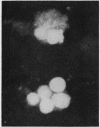Abstract
A positive serological diagnosis of amoebiasis could be made by immunofluorescence in 66 of 78 established cases, taking a serum titre of 16 or higher as diagnostic: at this level there were no false positives among 94 control sera. The test is simple and may be carried out on amoebic smears stored for several months in 2-octanol. The serological activity is largely confined to the IgG immunoglobulin fraction and is specific for Entamoeba histolytica; cross reactions were not detected with other protozoa. Gel diffusion serological analysis permitted a positive diagnosis of amoebiasis in 60 of the 78 cases, and, combining this with the immunofluorescence test, raised the diagnostic score to 71 cases.
Full text
PDF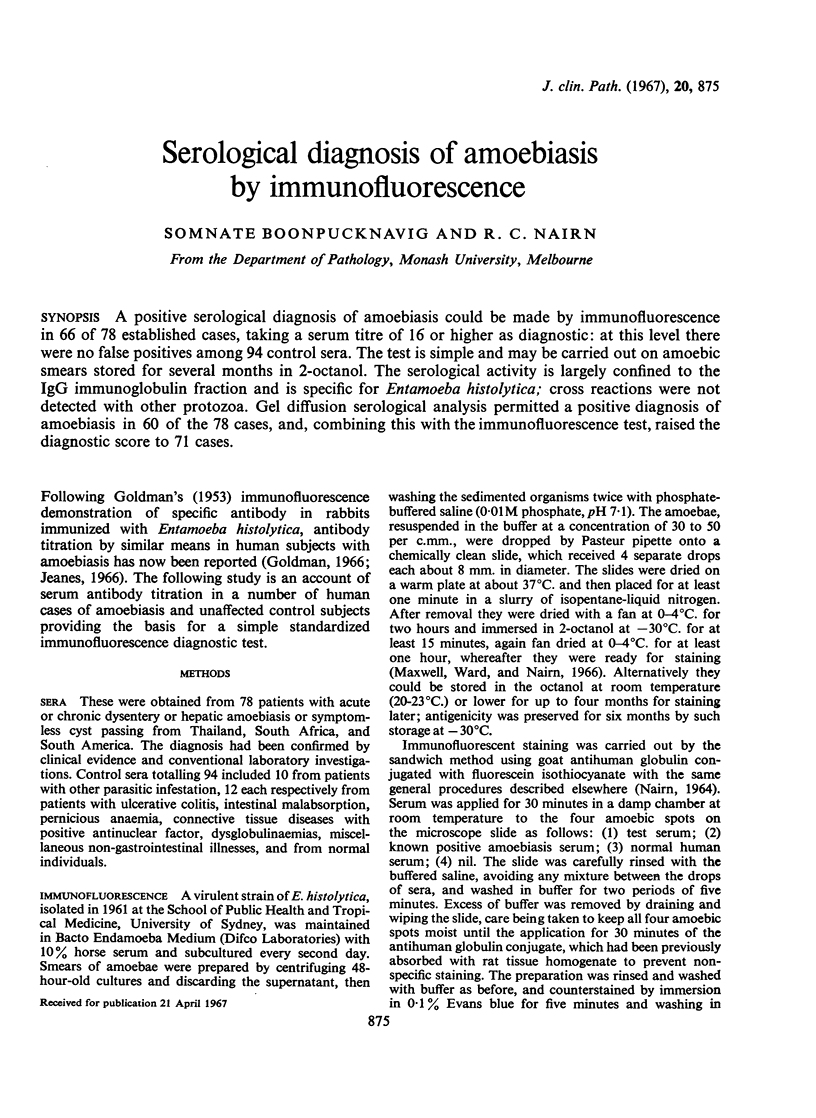
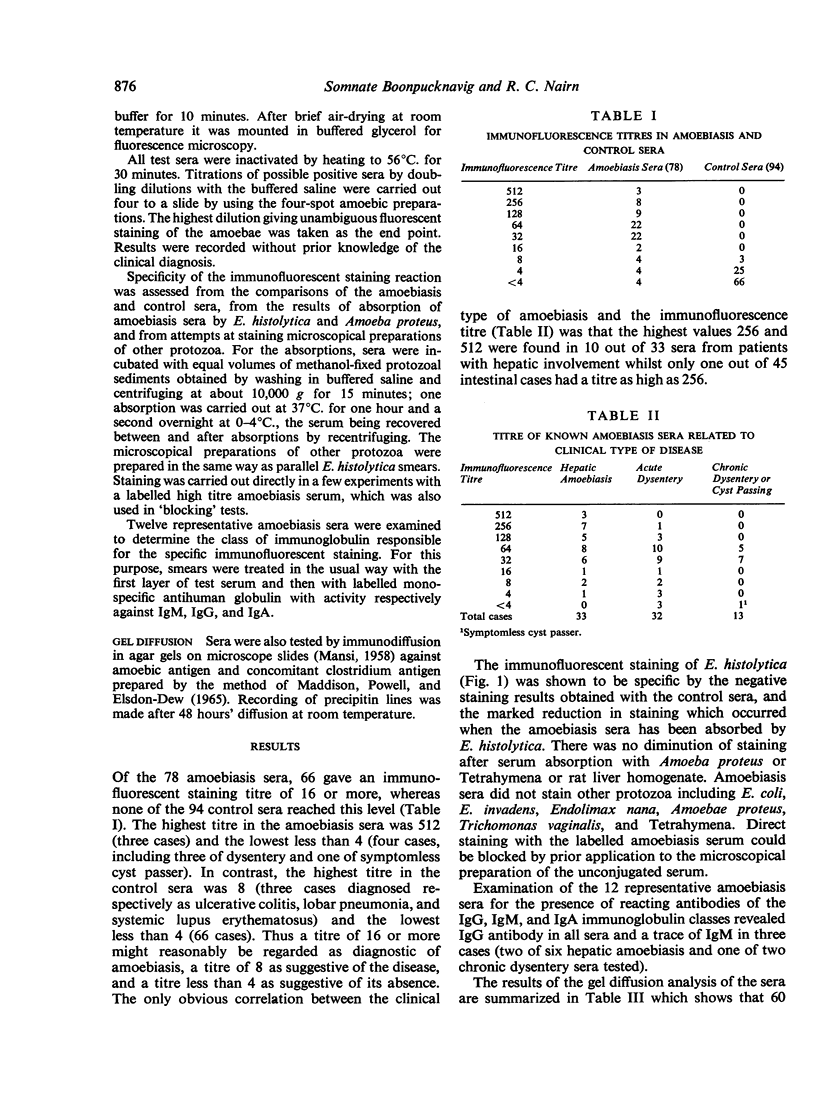
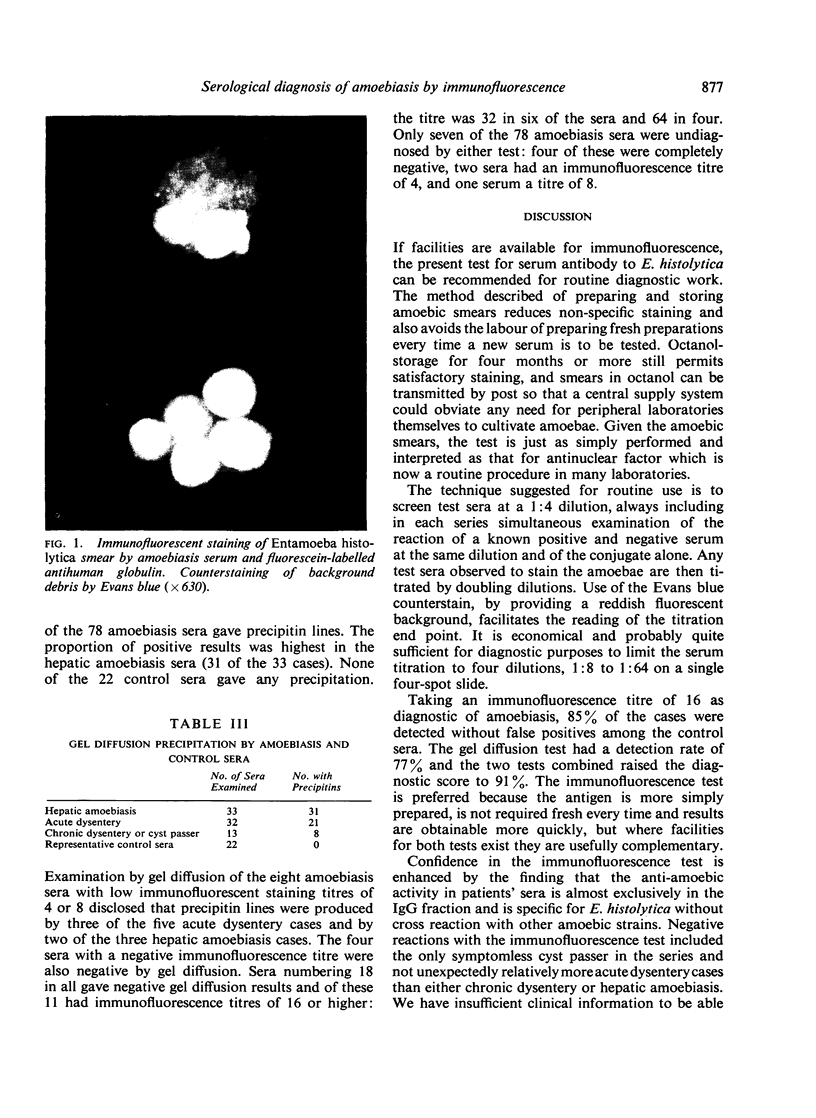
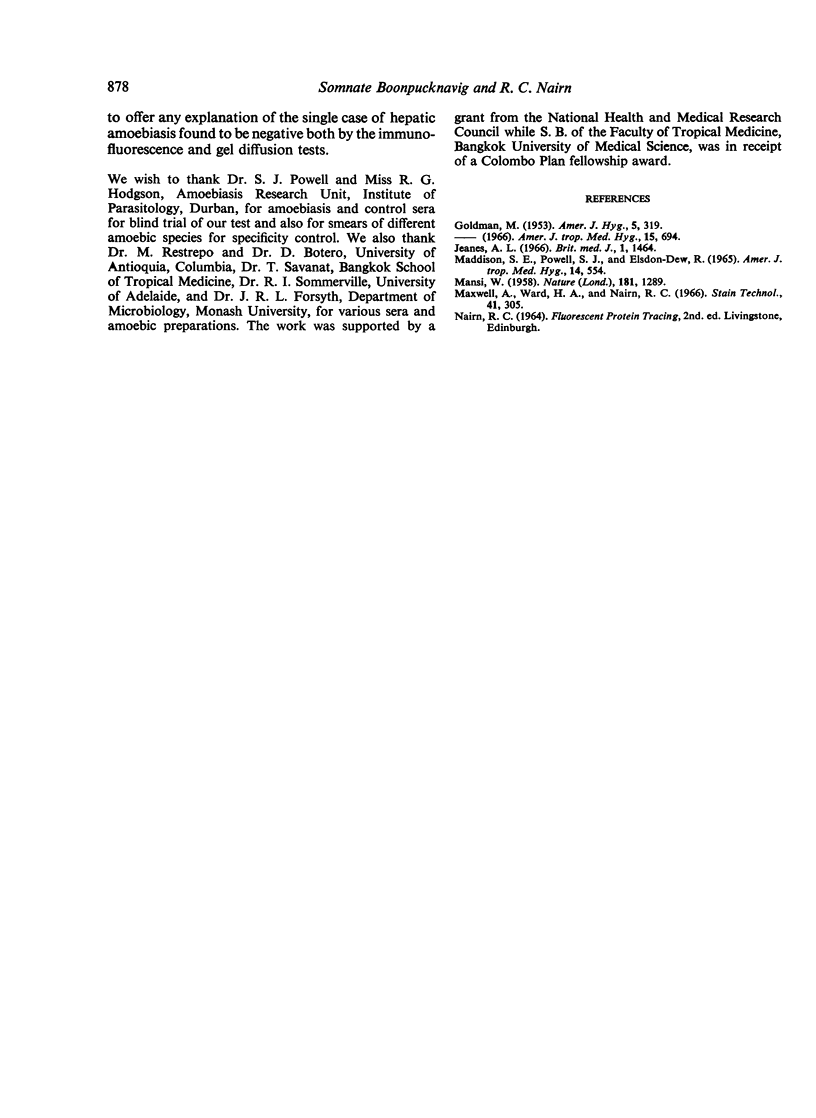
Images in this article
Selected References
These references are in PubMed. This may not be the complete list of references from this article.
- GOLDMAN M. Cytochemical differentiation of Endamoeba histolytica and Endamoeba coli by means of fluorescent antibody. Am J Hyg. 1953 Nov;58(3):319–328. doi: 10.1093/oxfordjournals.aje.a119608. [DOI] [PubMed] [Google Scholar]
- Jeanes A. L. Indirect fluorescent antibody test in diagnosis of hepatic amoebiasis. Br Med J. 1966 Jun 11;1(5501):1464–1464. doi: 10.1136/bmj.1.5501.1464. [DOI] [PMC free article] [PubMed] [Google Scholar]
- MANSI W. Slide gel diffusion precipitin test. Nature. 1958 May 3;181(4618):1289–1290. doi: 10.1038/1811289b0. [DOI] [PubMed] [Google Scholar]



